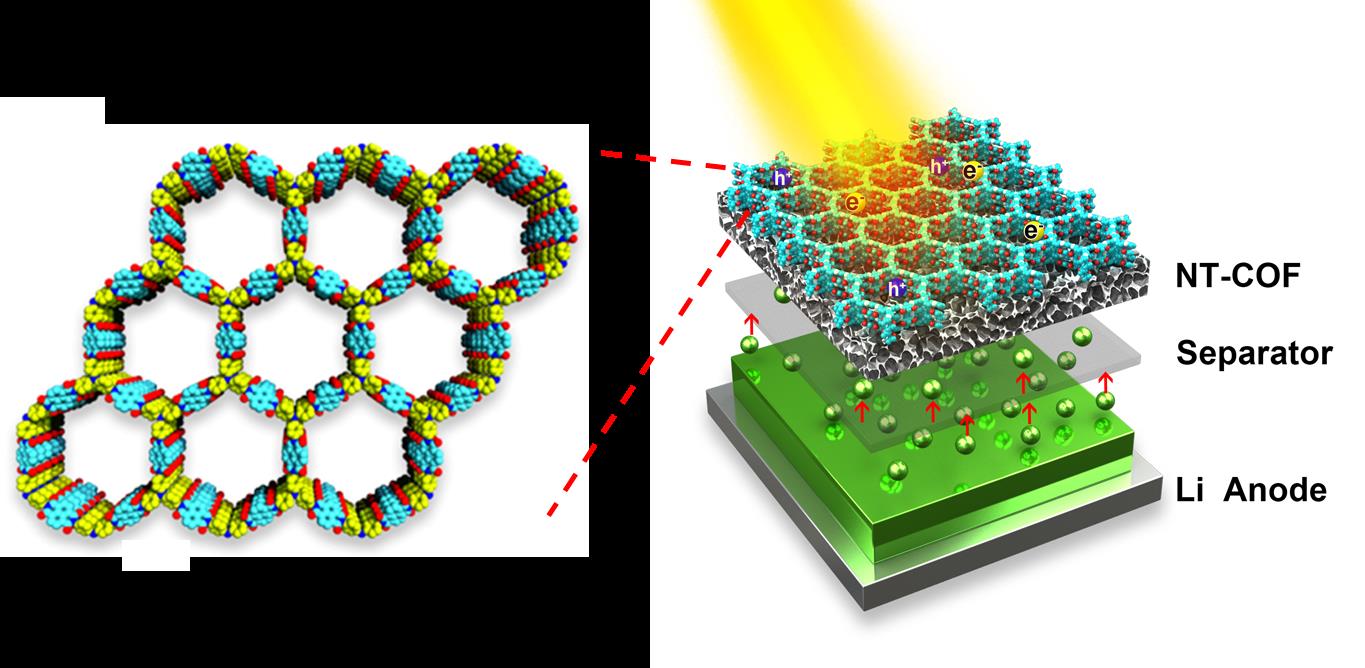The reserve of solar energy into electrochemical energy storage devices is an effective solution to overcome the disadvantage of intermittent solar energy for its widespread utilization. However, connecting to the solar cells in series by wires or integrating a photoelectrode is complex, high-cost and low-efficiency method to harvest solar energy in energy storage devices.
Developing bifunctional materials as photo-responsive cathode in two-electrode system is the key to the construction of photo-assisted energy storage devices, which has remained a challenge for researchers.
In a recent study published in Angew. Chem. Int. Ed., the research groups led by Prof. WANG Yaobing and Prof. YUAN Daqiang at Fujian Institute of Research on the Structure of Matter of Chinese Academy of Sciences reported a new functionalized covalent organic framework (COF) as bifunctional electrode material for direct harvesting solar energy in energy storage device.
The new COF was synthesized by condensation reaction of 1,4,5,8 naphthalene tetracarboxylic dianhydride (NTDA, as acceptor unit) with tris(4-aminophenyl) amine (TAPA, as donor unit), namely NT-COF.
Using powder X-ray diffraction (PXRD) and calculation, we simulated that NT-COF is an AA parallel-aligned bnn net crystallized in the trigonal space group of P-31m, with a BET as high as 1276 m2 g-1.
Photochemical characterizations, especially femtosecond transient absorption (fs-TA) spectrum, demonstrated that the high efficiency of intramolecular charge transfer from triphenylamine (TPA) to 1, 4, 5, 8-naphthalenediimide (NDI) in NT-COF, which is benefit for solar conversion efficiency.
Further cyclic voltammetry (CV) tests revealed that NT-COF is also a suitable cathode material due to the highly electrochemical reversibility. The prototype lithium-ion battery (LIB) using NT-COF as cathode material an initial capacity about 124 mAh g-1 and long-term stability.
Importantly, when under light irradiation, the charging voltage decreased from 3.04 V to 2.53 V, meanwhile the discharging voltage increased from 2.42 V to 2.96 V in the prototype LIB. Thus, the total battery efficiency increased from 78.3 % to 117 %, demonstrating the direct solar-to-electrochemical energy in our design.
For further study, researchers propose a possible mechanism for the above results, which helps to discover a new set of bifunctional material for simultaneously converting and storage solar energy.

Figure: Extended structure of NT-COF (left) and the scheme of photo-assisted LIB (Image by Prof. WANG’s group)
Contact:
Prof. WANG Yaobing
Fujian Institute of Research on the Structure of Matter
Chinese Academy of Sciences
Email: wangyb@fjirsm.ac.cn